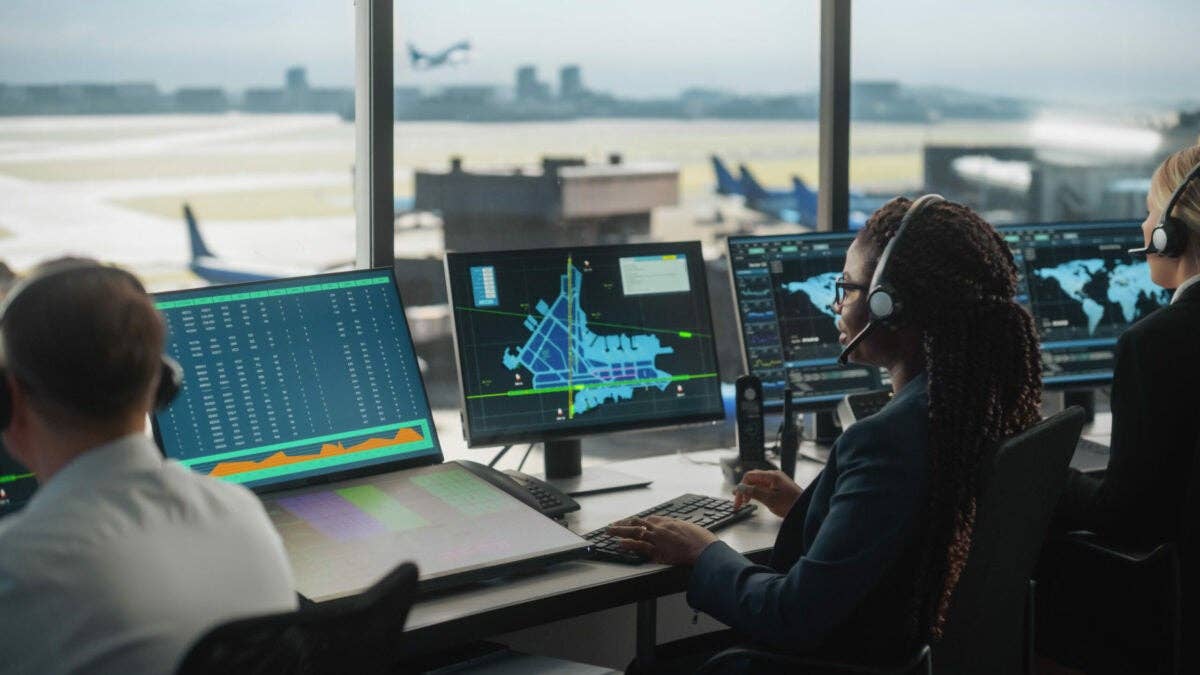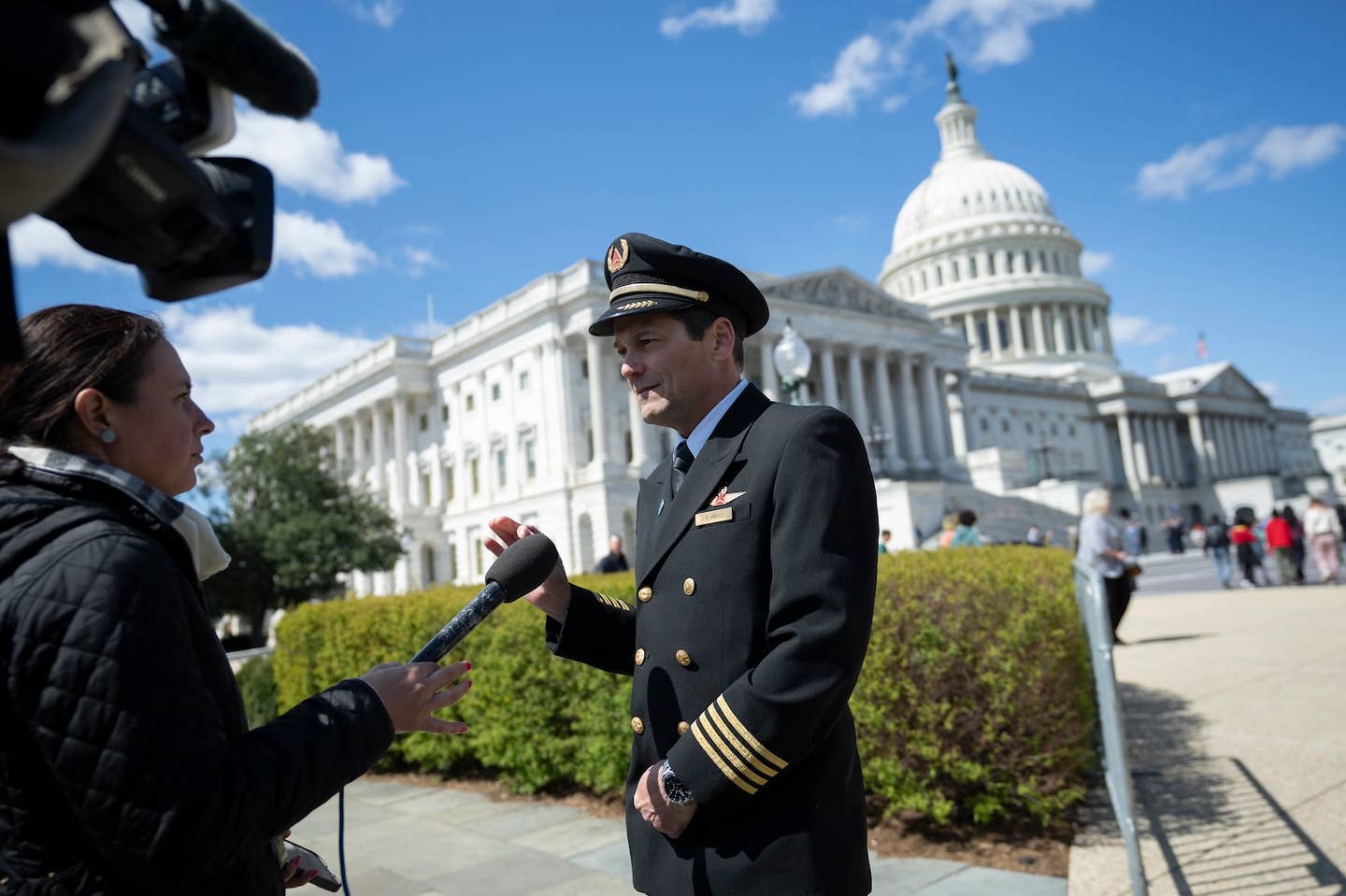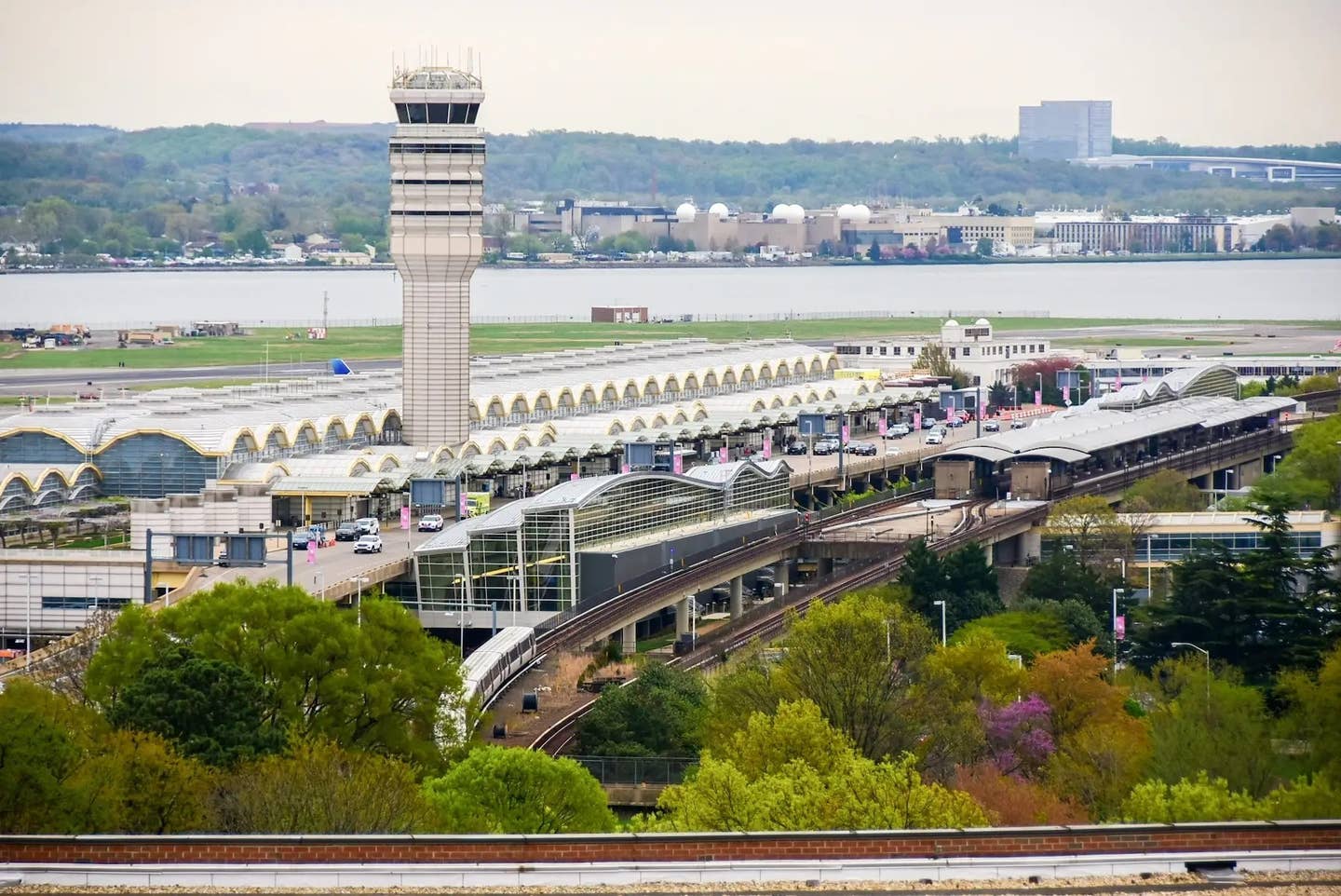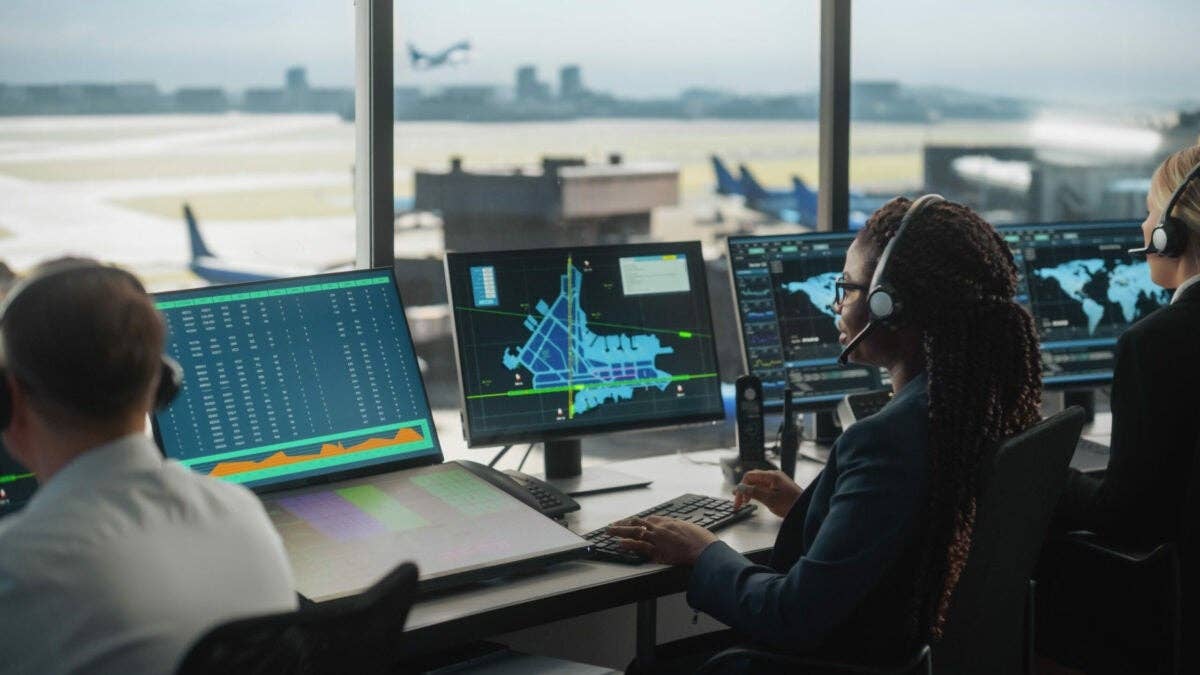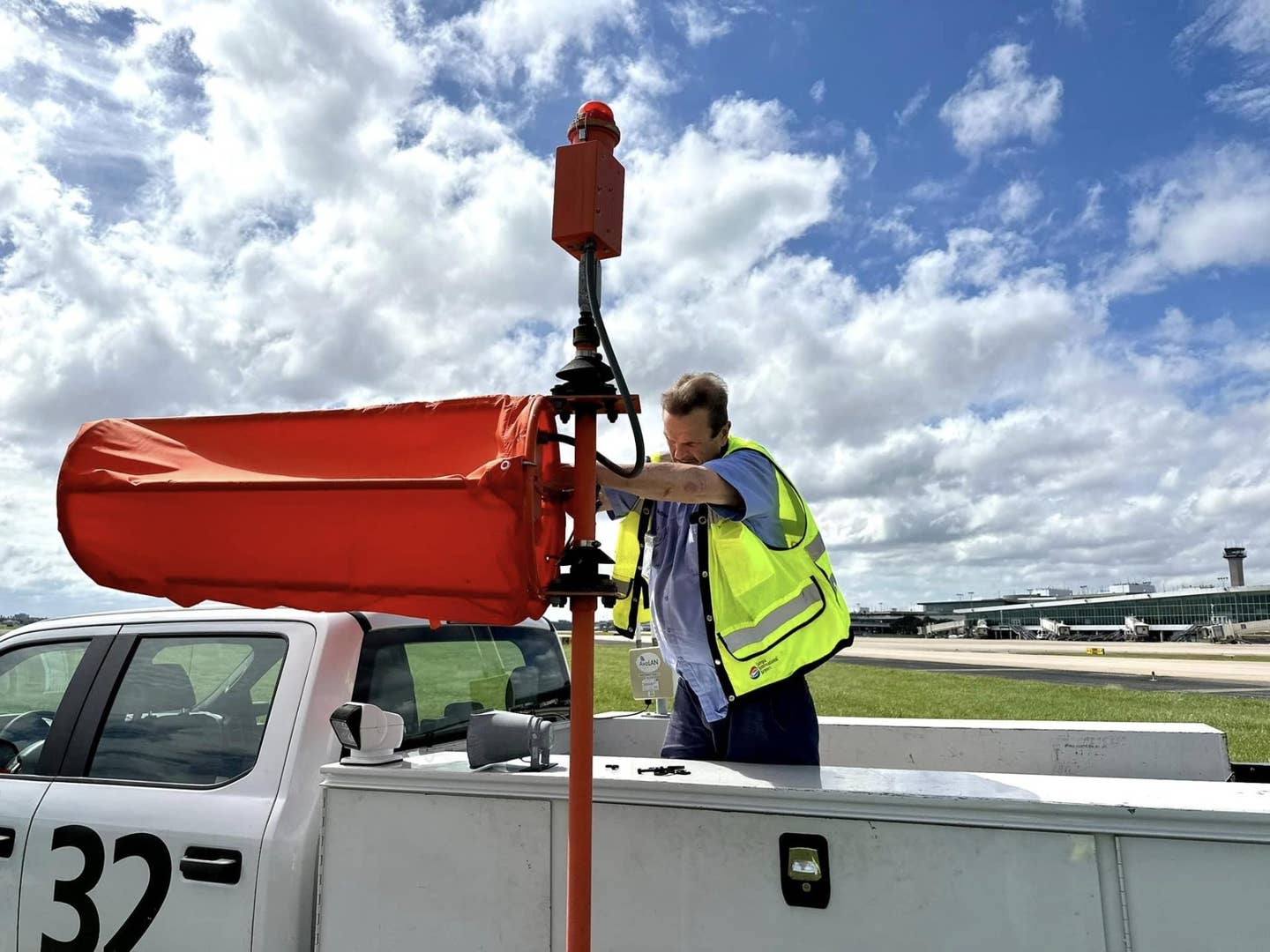How Crewed Plane Pilots Can Get a Part 107
Eight steps to earn your Part 107—and countless benefits.
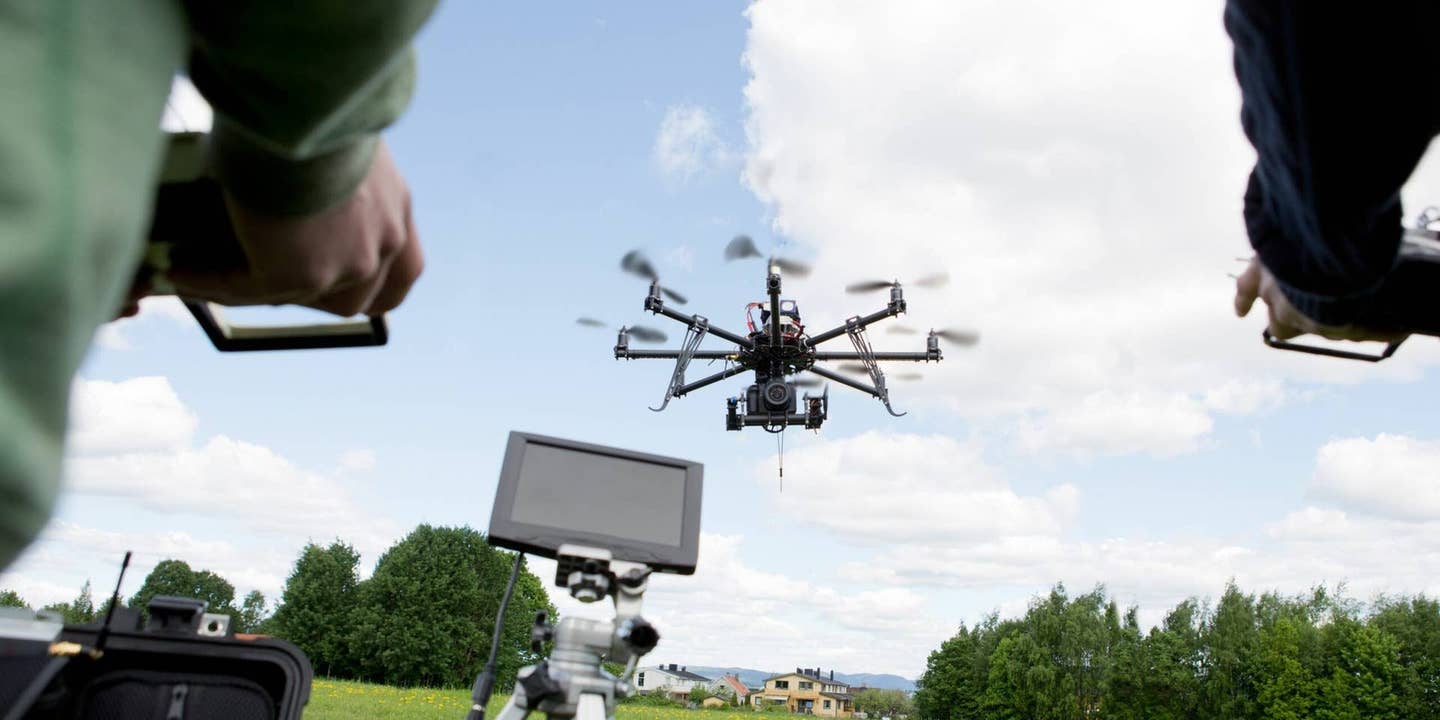
Having a Part 107 Remote Pilot Certificate, and experience operating drones, offers unmanned aircraft operators (drone pilots) many opportunities. [Credit: iStock]
Having graduated from the U.S. Naval Academy, I have many pilot friends.
Several of my classmates went on to fly military aircraft while I ran around on the ground as a Marine Corps officer. Most of us are now out of the military. Even so, since getting my Part 107 certification, I have joked with several of them that flying my drone is just as sexy as flying fighter jets.
While drones may not become the aircraft featured in the next installation of the Top Gun franchise, they continue to grow in importance. The drone industry is growing every year, and signs point to the trend continuing through at least 2050.
Pilots of crewed aircraft (Part 61 license-holders) will find passing the Part 107 certification exam much easier than the general public. That's because fixed-wing pilots will already know roughly 75 percent of the material from previous FAA exams and experience. The remaining 25 percent is specific to drones.
There are three key reasons you should consider obtaining a Part 107 if you are already flying:
- There are several benefits to having a Part 107.
- You already know 75 percent of the exam material.
- The process for getting a drone pilot license is easy.
Top Benefits of Commercial Drone Pilot Certification
As a crewed aircraft pilot, you’re clearly committed to a career in aviation. Drone technology is proving invaluable across a growing number of industries, and in many cases their uses relate to work already carried out by private and commercial pilots.
Adding a Part 107 certification can be advantageous to you on several levels.
Expanded Career Opportunities
Obtaining a Part 107 certification opens up a wide range of career opportunities.
For example, drones are becoming indispensable in real estate, agriculture, construction, and first responder operations. As a certified drone operator, you can provide aerial photography, surveying, and inspection services, all of which are in high demand.
Becoming a certified remote pilot allows you to work as a freelance drone operator or consultant offering specialized services that can diversify your professional portfolio beyond traditional piloting roles.
Enhanced Skill Set
Adding a Part 107 certification to your credentials enhances your skill set, making you more adaptable as a pilot.
Drones use advanced technologies, including sophisticated navigation systems, sensors, and data collection tools. By mastering these technologies, you can increase your technical expertise in ways that improve your proficiency at your primary job.
These dual capabilities demonstrate that you are at the forefront of technological advancements in aviation, ensuring you remain relevant and competitive.
Overhead Reduction
Drones can offer significant cost savings when compared to traditional aircraft. By eliminating or reducing the fuel and maintenance expenses of crewed flights, you’re able to perform tasks such as aerial surveys, inspections, and photography much more economically.
This cost-saving potential, in turn, makes you more attractive to employers and clients looking for efficient ways to complete projects.
Increased Regulatory Knowledge
Holding both a crewed aircraft pilot’s license and the Part 107 drone certification demonstrates an in-depth understanding of aviation regulations and safety protocols.
It highlights your commitment to upholding FAA regulations, helping you build credibility with clients and employers while preventing you from making costly mistakes.
Competitive Advantage
Dual certification gives you an edge in the job market.
Employers and clients value pilots with diverse experience in both crewed and uncrewed aircraft. Adding a Part 107 to your other certifications showcases your dedication to professional development.
By obtaining a Part 107 certification, crewed aircraft pilots can significantly enhance their career prospects, skill set, cost efficiency, regulatory knowledge, and market competitiveness, making it a valuable addition to their professional credentials.
Part 107 Exam Key Topics
The FAA Part 107 exam covers a comprehensive range of subject matter designed to ensure commercial drone pilots have the necessary knowledge to safely and legally operate UAVs. The exam consists of 60 multiple-choice questions, with a score of 70 percent (at least 42 correct answers) or higher required to pass.
Regulations
Questions related to regulations make up 15-25 percent of the exam. This section includes operational rules under Part 107, the requirements for obtaining and maintaining a remote pilot certificate, and the process for applying for waivers for specific regulations.
Airspace Classification and Operating Requirements
This is a topic that crewed aircraft pilots will find easy to understand. For these questions, you will identify the various airspace classes (Class A, B, C, D, E, and G), restricted and prohibited areas, temporary flight restrictions (TFRs), and the process for obtaining airspace authorizations. This section also accounts for 15-25 percent of the questions.
Weather
Weather-related questions account for 11-16 percent of the exam. You will need to demonstrate your understanding of how various weather conditions, such as wind, visibility, and temperature, affect commercial drone operations. Familiar sources for official weather information (METARs and TAFs) are also covered in this section.
Loading and Performance
Loading and performance, focusing on how weight and balance affect drone performance and assessing performance data under various conditions, comprise 7-11 percent.
Operations
The remaining 35-45 percent covers operations. Questions in this section include emergency procedures, crew resource management, knowledge of radio communication procedures, and airport operations, including runways, taxiways, and avoiding crewed aircraft. Operations questions also address physiological factors affecting pilot performance, such as health and medication, as well as maintenance and inspection procedures. Finally, it includes rules and safety procedures for night operations.
Overall, the Part 107 exam ensures that remote pilots are well-prepared to safely and effectively integrate small unmanned aircraft system (sUAS) operations into the national air space by covering a broad range of crucial topics.
Steps to Obtain FAA Part 107 Drone License Certification
The process involves several easy steps for crewed aircraft certification holders interested in obtaining a Part 107 certification. Each step is designed to ensure a comprehensive understanding of drone regulations and safe operating practices.
1. Understand Part 107 requirements.
The first step is to familiarize yourself with FAA Part 107 drone program governance, which regulates the commercial use of unmanned aircraft systems (UAS). Part 107 laws cover operational limitations, requirements for remote pilot certification, and rules for maintaining sUAS.
2. Study for the Knowledge Test.
Although private pilot license (PPL) holders already have significant aviation knowledge, the Part 107 certification requires you to demonstrate an understanding of drone operations. Topics you may need to become more familiar with include weather effects on drones, drone maintenance, and emergency procedures when operating unmanned aerial vehicles (UAVs).
Even if you’ve been flying for many years, it’s important to study the topics that are specific to drones. You will find many resources available to help prepare you for the exam, including the FAA's study guide, online courses, books, and Code of Federal Regulations (CFR) Part 107 practice tests.
3. Schedule the test.
Next, schedule the Part 107 Aeronautical Knowledge Test at an FAA-approved knowledge testing center. There are currently more than 800 testing centers in the U.S. The test consists of 60 multiple-choice questions that must be completed within two hours. You need a score of at least 70 percent to pass.
4. Take the Part 107 exam.
On the test day, bring a government-issued photo ID. The testing center will provide everything else. After passing the test, you will receive a knowledge test report with a unique identification number.
5. Complete FAA Form 8710-13.
With the knowledge test report in hand, complete FAA Form 8710-13, available on the FAA's Integrated Airman Certification and Rating Application (IACRA) website. This form is an application for a remote pilot certificate with an small unmanned aircraft system (sUAS) rating.
6. Pass the TSA Background Check.
Once the application is submitted, the Transportation Security Administration (TSA) conducts a security background check. This step is usually pretty straightforward for PPL holders as you have already passed similar checks.
7. Receive Your Certificate.
Upon successful completion of the background check, you will receive a temporary remote pilot certificate, allowing you to start operating drones commercially. The permanent certificate arrives by mail and can take up to several months if the FAA is backed up.
8. Maintain Your Part 107
To maintain your Part 107 certification, you must complete recurrent training every 24 months to ensure your knowledge stays current with the latest regulations and safety practices. The training and test are both free and online.
One of the Simplest Aerial Maneuvers You Can Make
If you've been on the fence about getting your drone license, hopefully this article has made your decision-making process easier.
By following these steps, private pilots can add the Part 107 certification to their credentials, enhancing their marketability and opening new professional opportunities in the growing field of drone operations. For help on the exam, check on this Part 107 guide.
As a private pilot your experience and knowledge of FAA regulations makes you well suited to become a commercial drone pilot. Unlock the many benefits of the Part 107 by signing up for an online or in-person course today or by reviewing the FAA study guide on your own.
FAQ
How much does it cost to get a Part 107 drone license?
It costs $175 to take the exam, but optional study materials and training courses typically cost anywhere from $99 to $350 depending on the provider. Research offerings from reputable schools such as The Pilot Institute, Sporty's, and Altitude University for detailed prices.
Can a private pilot fly commercial drones without a Part 107?
No. Even with a pilot certificate issued under Part 61, the FAA requires you to have a Part 107 to fly drones commercially.
How does Part 107 certification impact pilot insurance?
Typically the insurance you carry on crewed aircraft will not cover you for commercial drone operations. You will need to get additional insurance. Commercial drone insurance is very affordable.
What kind of training is available for pilots to prepare for the Part 107 exam?
Pilots will find there are excellent online courses, books, and other materials through trusted providers such as Sporty’s, and study aids on YouTube.

Sign-up for newsletters & special offers!
Get the latest FLYING stories & special offers delivered directly to your inbox


